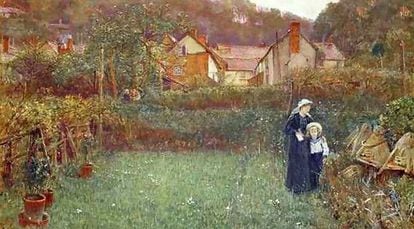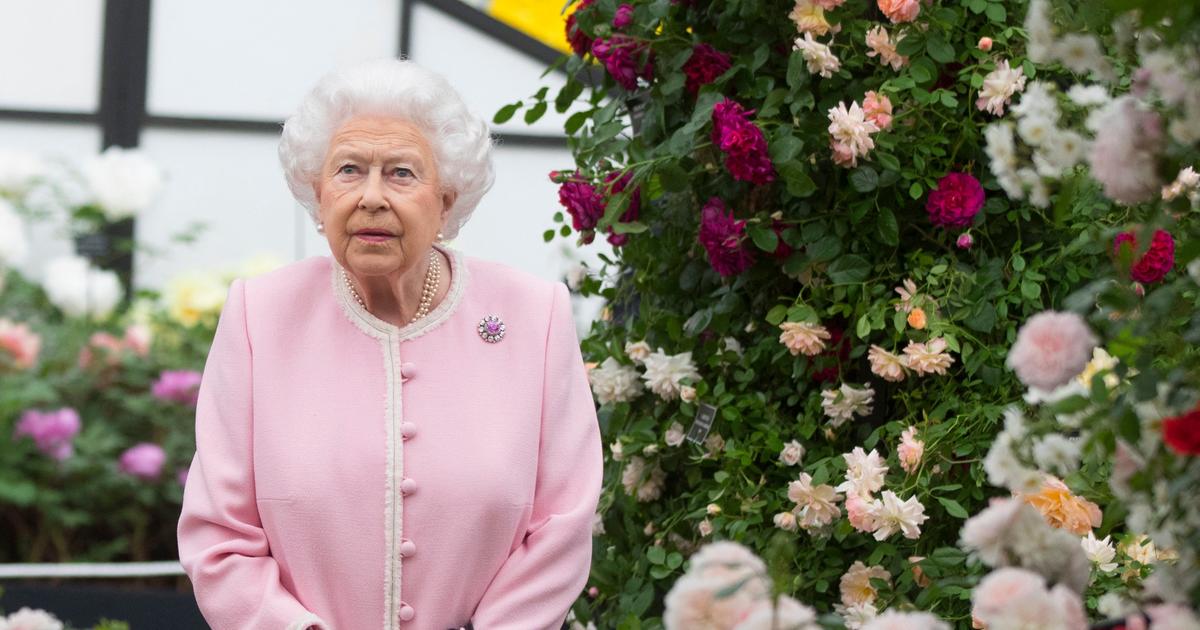Of all the ceremonies that have surrounded the long funeral of Elizabeth II, which ends this Monday with the state funeral, the strangest may have seemed the moment in which the person in charge of the queen's hives, John Chapple, reported the death to the bees of the sovereign, who died on September 8 at the age of 96.
This rite, revealed by the
Daily Mail
, consisted of approaching each hive in Clarence House and Buckingham Palace and saying the following sentence: “The mistress is dead, but don't go.
Your master will be a good master to you.”
And then wrap them with a black bow.
However, this is a ritual that is by no means exotic: it is a deeply rooted tradition throughout the world.
In
Offering to the storm,
a novel by the Spanish author Dolores Redondo, the following scene is recorded: “In Batzán, when someone died, the lady of the house went to the field to the place where they had the hives, and by means of a magic formula He communicated to the bees the loss and the need for them to make more wax for the candles that were supposed to light the deceased during the wake and the funeral.”
In his classic
Huckleberry Finn,
Mark Twain relates the following: “If a man had a hive and that man died, the bees had to be told before the sun rose again the next morning, or they would get sick. They stopped working and died.
More information
Last minute of Isabel II's funeral, live
A painting by the British naturalist painter Charles Napier Hemy (1841-1917) shows a widow and her son going through the hives to break the news to the insects.
It is called precisely
Telling the bees
.
You can even watch a 1926 Dutch film on YouTube in which a man ceremoniously approaches his hives with his pipe between his teeth to explain a family misfortune to the bees.
Charles Napier Hemy's painting 'Telling the bees' (1897).
The Mieladictos blog, coordinated and written by the beekeeper Alberto Colina, collects many more samples of a tradition that traveled from Europe to America and of which there are numerous testimonies.
"Bees have always been linked to the moment of death," explains Dolores Redondo, who relates that the scene that she recreated in her novel comes from the oral tradition of the valley.
There the words that are pronounced are “
Erliak, erliak Gaur hil da etxeko nausia Erliak, erliak, Eta behar da elizan argia
”, which can be translated as: “Bees, bees, today the mistress of the house has died.
Bees, bees, we need wax in the church."
"When I wrote the trilogy, I was surprised by the number of similar rites that existed in many parts of the world," says the Navarran writer.
"There is, for example, a tradition in Galicia that relates the buzzing of bees with the liberation of the soul after death," she continues.
When the dead man was vigil, there was a moment in which all those who were in the house went up to the room where the deceased was and imitated the buzzing to facilitate the transition to the other world.
Eva Crane, a British scholar who spent her life studying bees and beekeeping, dedicates the sixth chapter of her classic,
The Book of Honey
(Fund of Economic Culture, though sadly out of print), to these ceremonies.
The title is 'Tell it to the bees'.
“One of the results of the secularization of bees”, writes this scholar who died in 2007, “seems to have been an increase in her consideration in the family sphere.
In fact, they are considered part of the family.
The rite of 'telling the bees' about a death or other family event is one of the most remembered of all the customs related to bees and honey”.
Detail of a bee in Maintal (Germany). ARNE DEDERT (AFP)
In his book, Crane places the first traces of this rite in the 16th century, specifically in a passage by the German scholar Joachim Gamerarius (1500-74): “Who would believe without superstition (if experience did not make it credible) that the most common is it that all the bees die in their hives if the owner of the house dies by chance, unless the hives are immediately moved to another place?
And yet I know that this has happened to people who are not tainted by superstition."
British folklorist Mark Norman published a book titled precisely like this:
Telling the Bees and Other Customs: The Folklore of Rural Crafts
.
His explanation coincides with Crane's: although some scholars argue that it goes back to Celtic mythology, which believed in the relationship between bees and the soul —there he would hook up with Galician traditions— he maintains that it began to become common in the 18th and 18th centuries. XIX.
"We found indications that it was widespread in both America and Europe at the time," writes Norman.
“It was well documented in New England, so it may have traveled all the way to America with the colonists.
The communication of a death to the bees was done hive by hive.
The beekeeper first struck the hive before broadcasting the news of death, and the hive was also covered with a black cloth or similar piece during the mourning period.
In some places, bees were sung to instead of spoken to.
It was considered very bad luck to ignore the bees and not tell them about a death or other important family event.
Failure to do so meant that the bees would either leave the hive or perish."
It is a tradition that, as the queen's death showed, has not entirely disappeared, at least not in the UK.
Stephen Fleming, beekeeper and co-director of
BeeCraft magazine,
the main publication in the sector in the United Kingdom, explained to
The New York Times
that he had performed a similar ceremony when a friend of his passed away.
"I think that's something he would have liked."
However, the beekeeper Alberto Colina explains that in Spain it has been erased: "I have made a quick telephone consultation between beekeepers from the Valencian Community, La Rioja and the Basque Country, and they are not aware that the farewell of the bees.
They do tell me that they have heard of bee farewells in the area of Las Hurdes, in Extremadura.
For Castilla y León, I don't know anything either.
From the looks of it, today we care more about the price of honey and keeping the bees healthy.”
Subscribe to continue reading
read without limits
Keep reading
I'm already a subscriber








